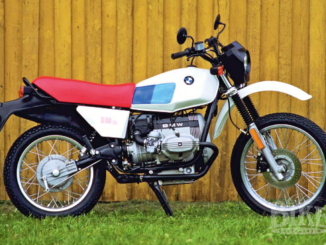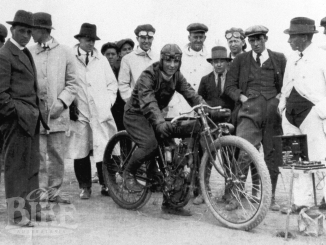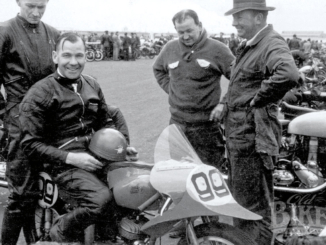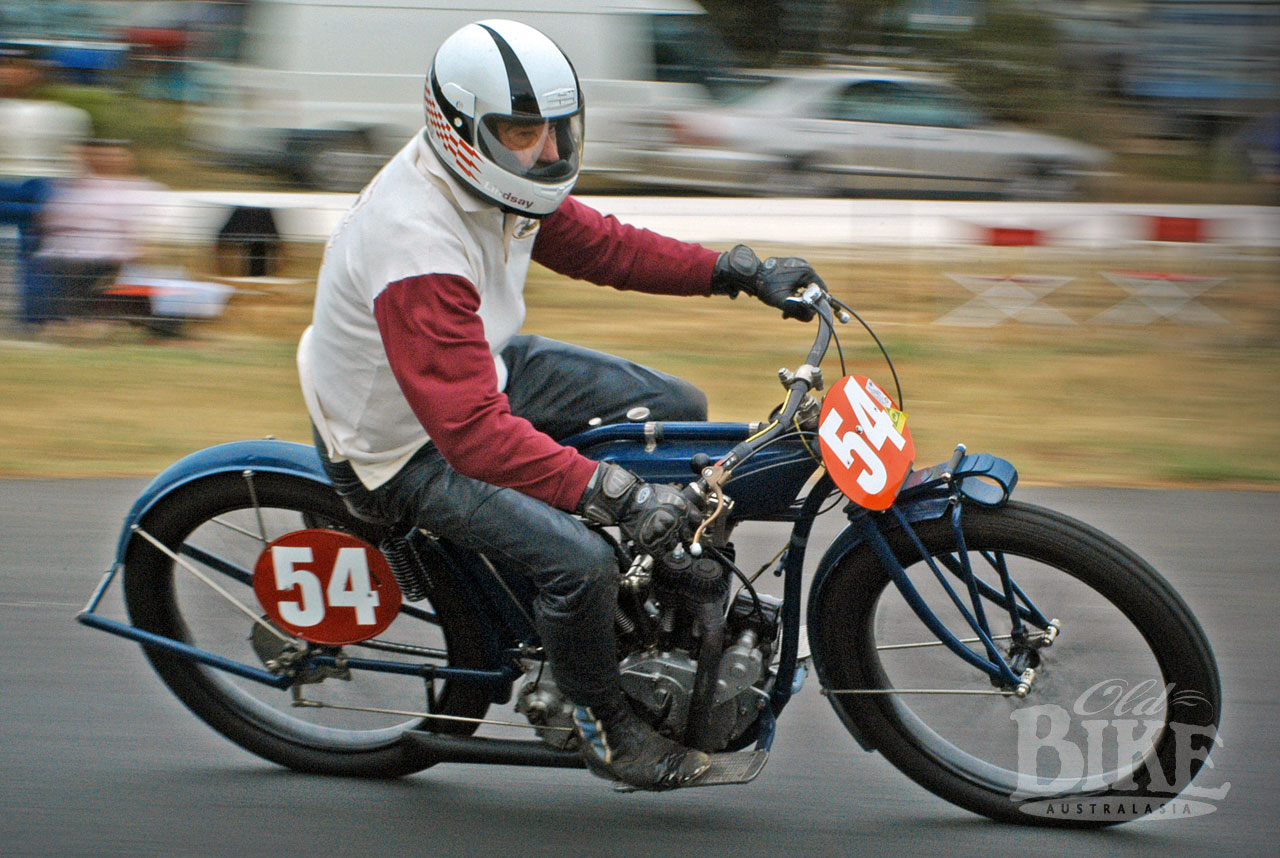
From our Old Bike Archives – Issue 91 – first published in 2020.
Story: Lindsay Urquhart • Photos: Lindsay Urquhart and Rob Lewis
My interest in V-twin 8V technology started in 1998 when I found the remains of a 1915 Indian 8v board track racer and after much negotiation had it in my workshop.
It had been one of two bikes allocated to Rhodes Motorcycles in Melbourne by the Indian factory out of a special version of twenty five bikes built for dealer use only. Indian had been racing 8v since 1911 so were some way along the development trail. This one was rather special as it had been modified for road racing with a throttle, brake, clutch and front suspension; the standard Board Tracker had none of these refinements and was just a full-bore racer.
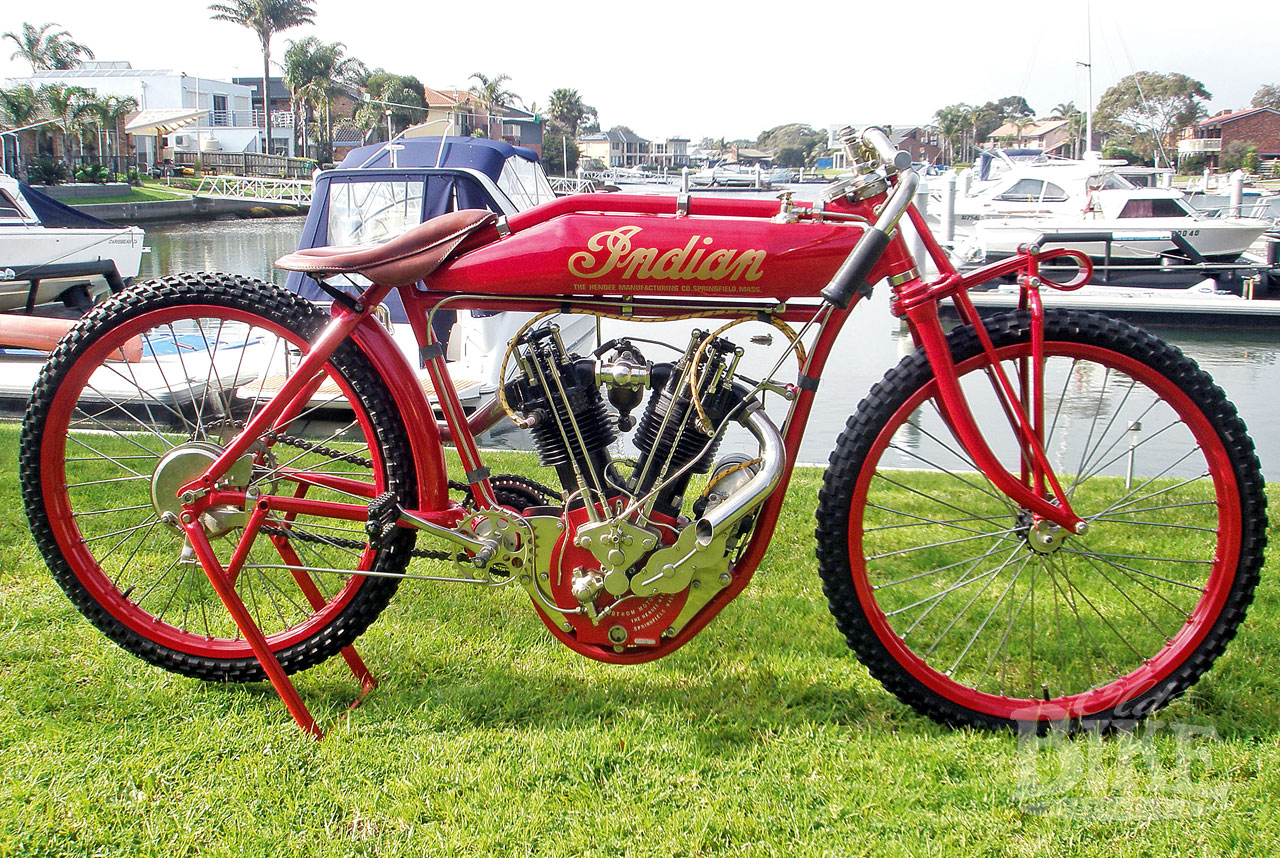

It had been raced successfully by Jack Booth and Harold Parsons and had briefly held the World Speed record at 168km/h (194 mph) in 1916 but unfortunately in 1918 had broken a connecting rod that destroyed most of the motor in a hill climb held at Ferntree Gully. It had then lay rotting into the ground in a country shed for eighty years. After some effort I was eventually able to remake the complete bike.
Earlier while I was at a BMW service conference held in the British Motorcycle Museum at Birmingham they had on display two of Claude Temple’s Anzani race bikes. Temple was a professional racer and in 1922 the first to lap at 100 mph at the Brooklands track on an Anzani-powered bike specially built for him by OEC. One display bike, the record breaker, had a special OHC V Twin motor and the other was an Anzani 58 degree pushrod eight-valve twin and I reckon they were the sexiest vintage race bikes that I had ever seen. They had special interest to me because of my frame building hobby as these were of a very torsionally strong twin tube design and had brazed joints with no traditional cast lugs; very unusual for the time.
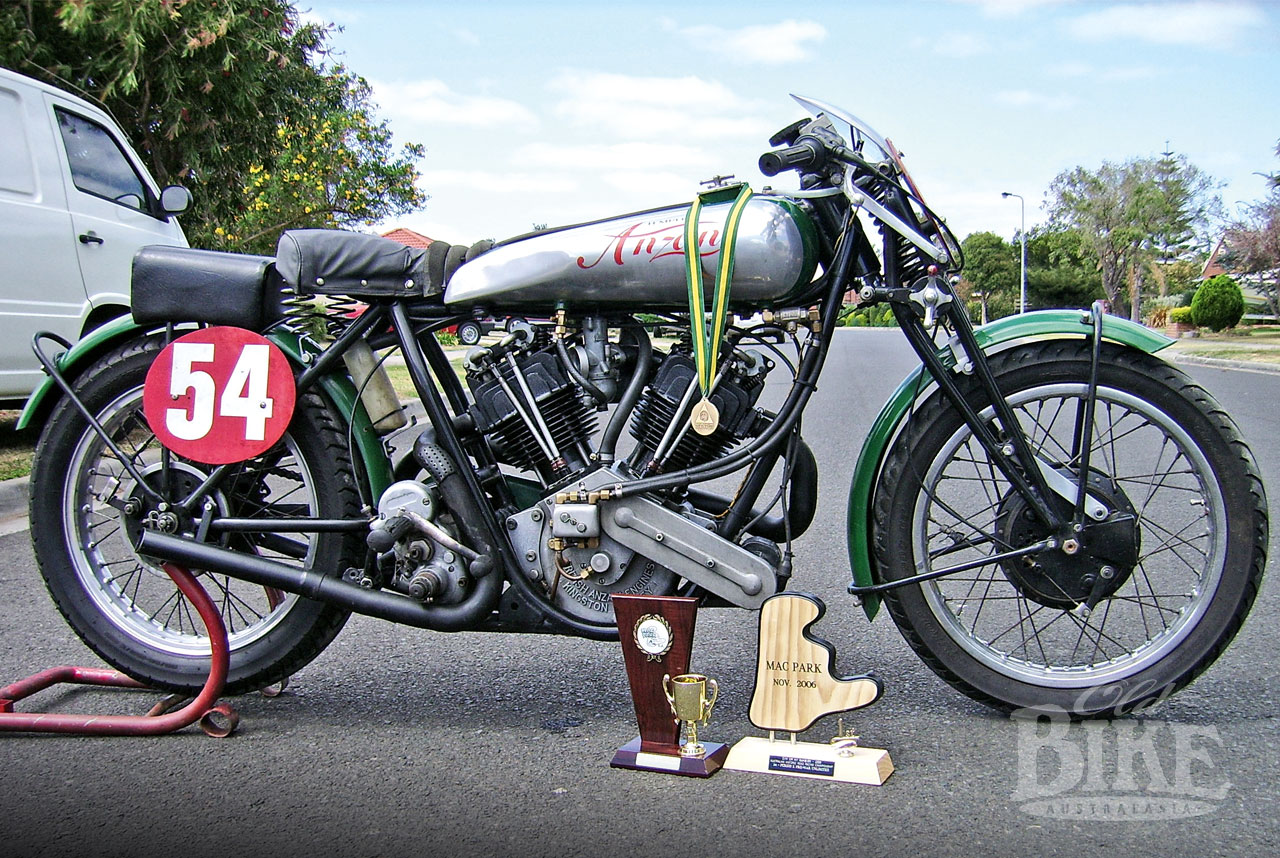
While working on the Indian rebuild I was told about a 1922 Anzani 8v V-twin motor in Gippsland so another challenge was on and I was fortunately able to borrow it so I could make some patterns and eventually a set of castings with the intension of replicating the Temple Anzani for Historic racing.
At that time Motorcycling Australia were about to introduce a Log Book scheme for Historic Racing that required all the parts of a race bike to be indistinguishable from the period parts nominated. It was therefore important to maintain the original outside appearance of the motor and as the internal parts of the Anzani were of poor and dated design, and there was no restriction on the motor internals, I could freely use my ideas in the new build.
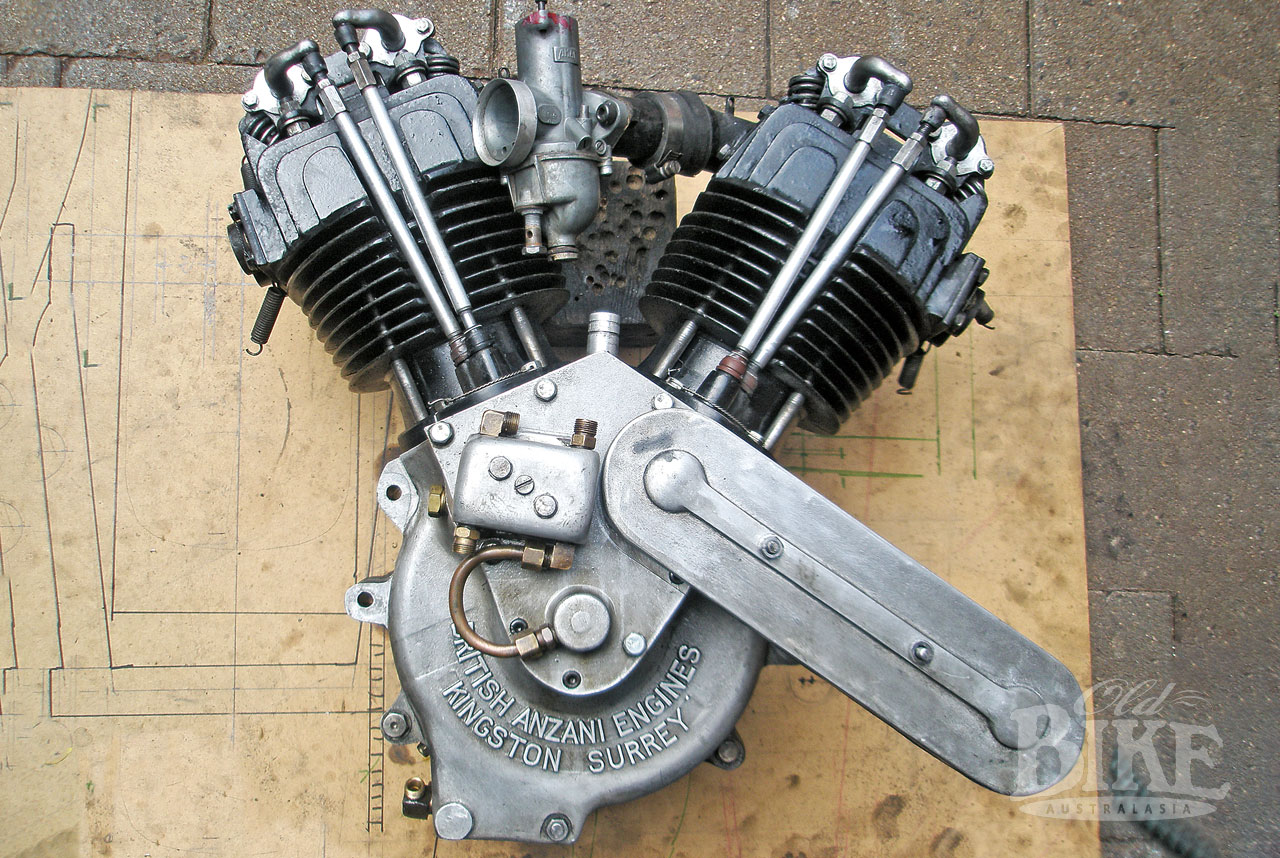
My redesign was based around an aftermarket Harley Davidson Sportster crankshaft and conrods, modern style four valve combustion chambers, easily obtained valves, forged pistons and my own cams and valve rockers. I replicated the OEC Temple frame with real attention to the steering geometry as girder forked bikes do not have a great reputation for stability at the potential high speed of this bike. When finished I had it on club registration for testing and was very impressed with the smoothness and torque of the 58 degree motor.
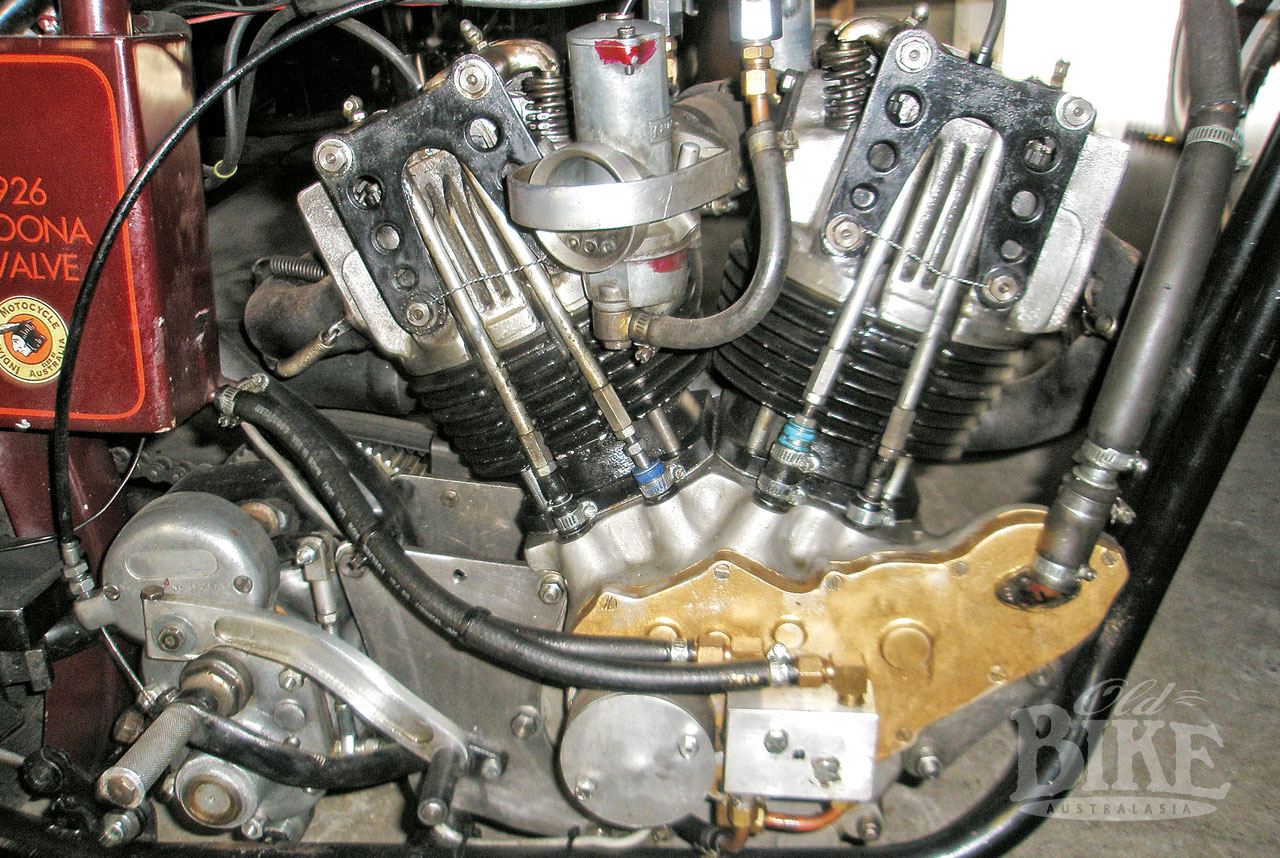
While this was happening Peter Arundel, an Indian collector who I was doing a lot of work for including building the Vindian (Vincent Indian) replica and the OHV Chief kits, had purchased a 1924 Indian Altoona side valve race engine and so we decided to build a replica of a 1924 Indian eight valve race engine on these very strong crankcases. Rhodes Motorcycles had acquired one of these engines in 1924 for an American rider Paul Anderson, who ran it to 200 km/h (124 mph) at Sellicks Beach, SA for another Indian World Record.
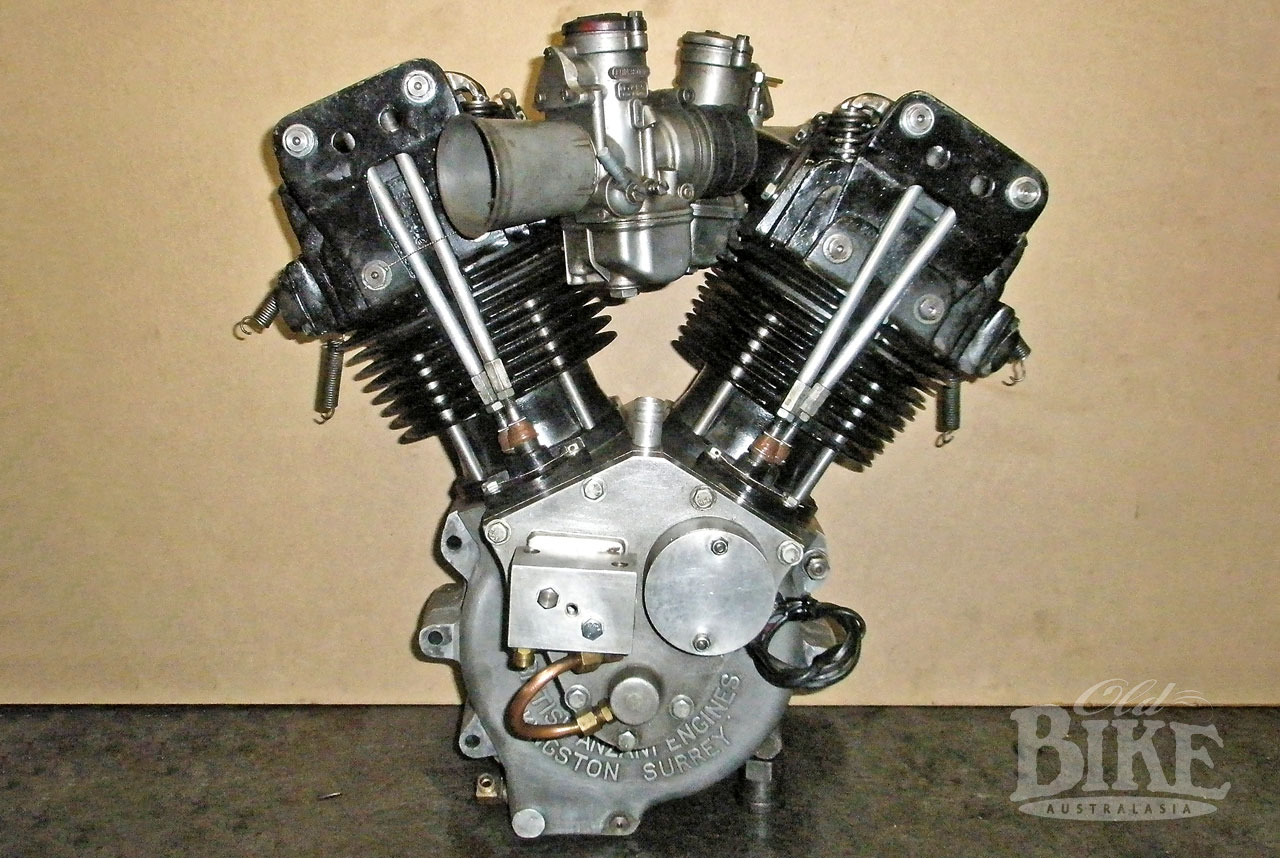
In the build I used the same components as the Anzani with some adapted to the 42 degree Indian vee and its different timing gear layout and this was fitted into a replica of a period Scout race frame but again was set up for good road race handling. We then had to come up with a lot of supporting evidence for our Log Book applications and after considerable negotiation/argument this was finally achieved.
The results were great as this Indian package with Steve Hari as pilot achieved amazing 1.59 minute laps at Phillip Island in 2002 and went on to many other race victories. Arundel then wanted to run the bike on the salt at the Lake Gairdner Speed Trials and it achieved a very stable 255 km/h (158.78 mph), a record for unstreamlined vintage bikes.
The Anzani was then converted to race specification and made ready to go to the salt as it had run to a 264km/h (164 mph) radar speed in very illegal testing in South Gippsland but unfortunately the next salt meeting was cancelled because of flooding and I lost interest in that exercise.
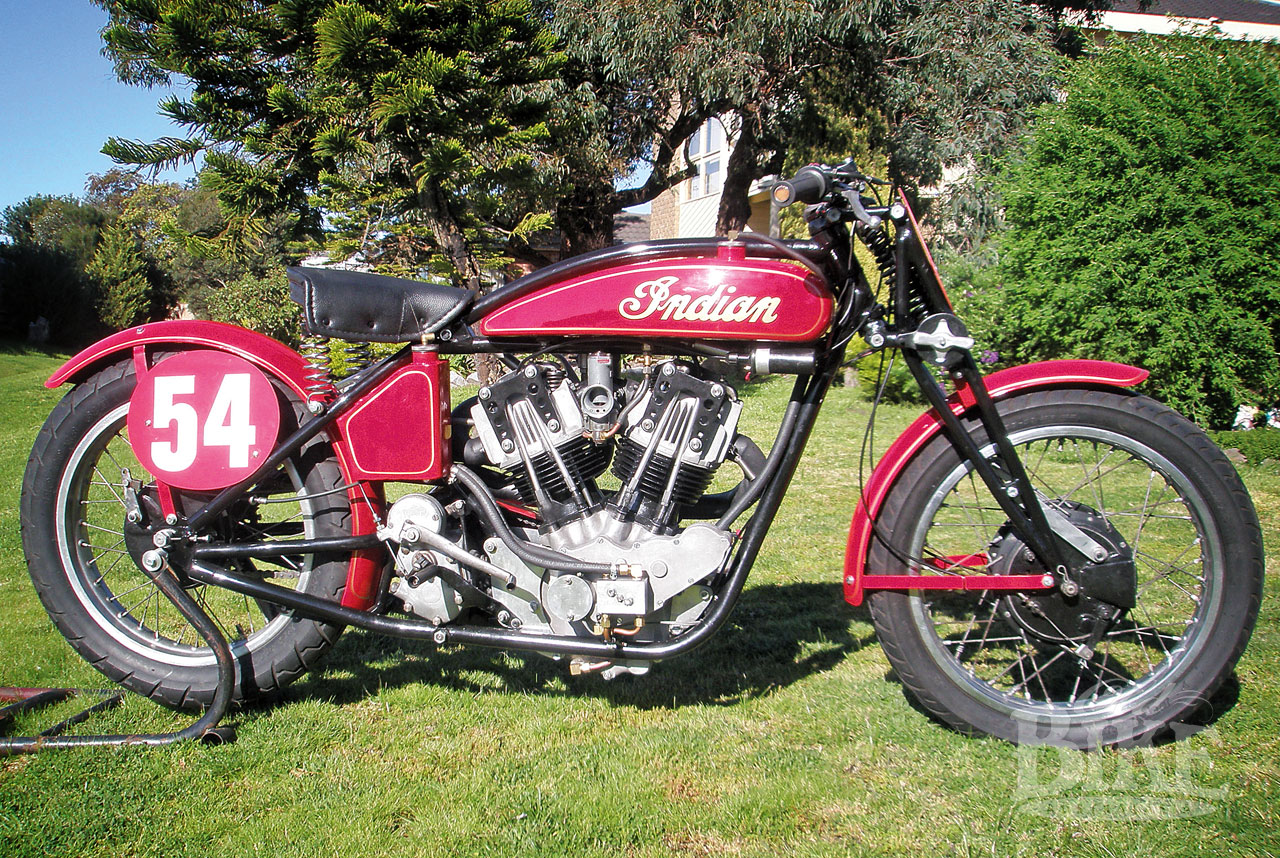
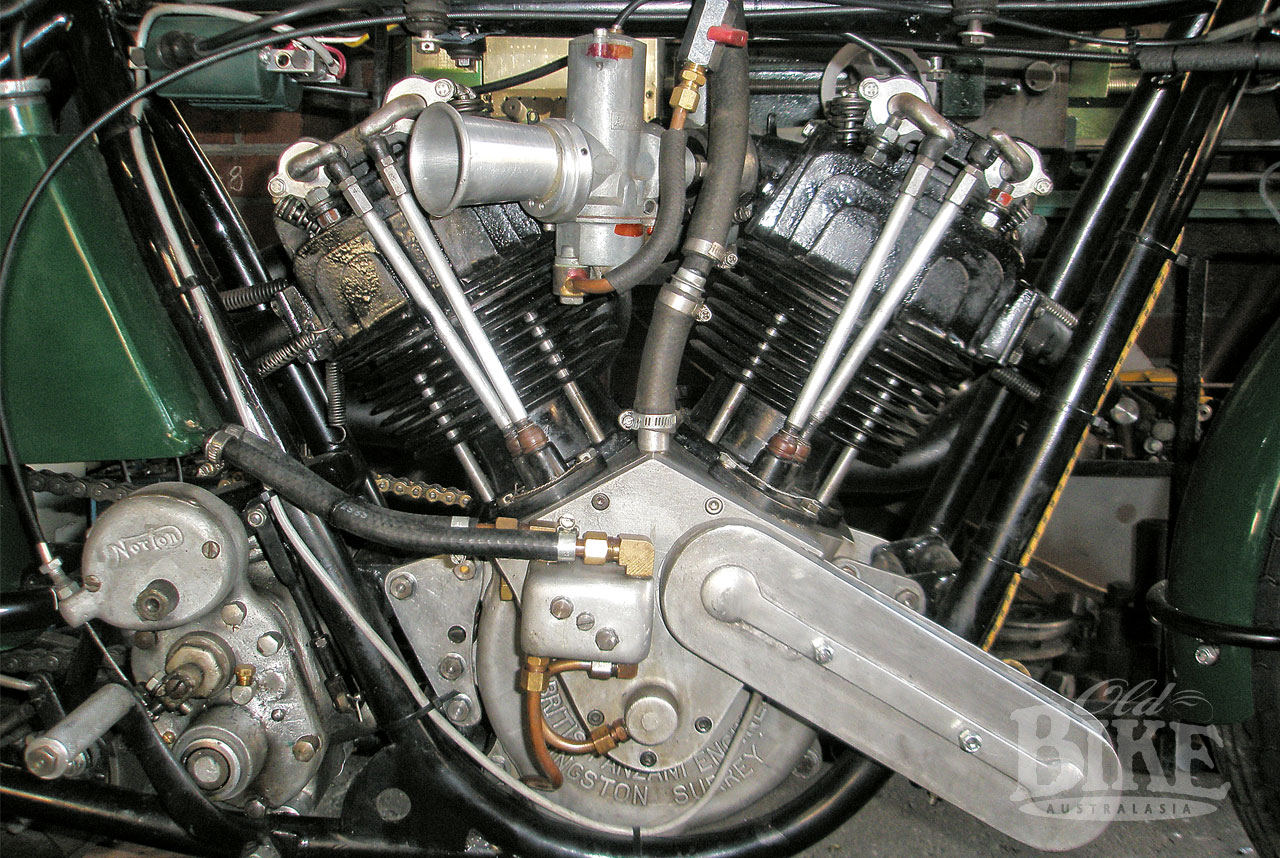
It was then raced very successfully by Keith Campbell and myself and I won a Victorian title and the Australian Championship at Mt Gambier in 2006 on it and soon after it went to a collector in Queensland, however it was soon replaced and some additional motors were built and sent to Europe for use in Morgan cyclecar chassis. Another Anzani engine was fitted into one of my sidecars and was also very successful
More of my Indian 8v Altoona racers are being very successfully run in the hands of Stan Mucha, Peter Birthisel and my son Rob and grandson Daniel. Peter is now after the speed record on a special-build Indian frame and has acquired an Anzani as a back up.
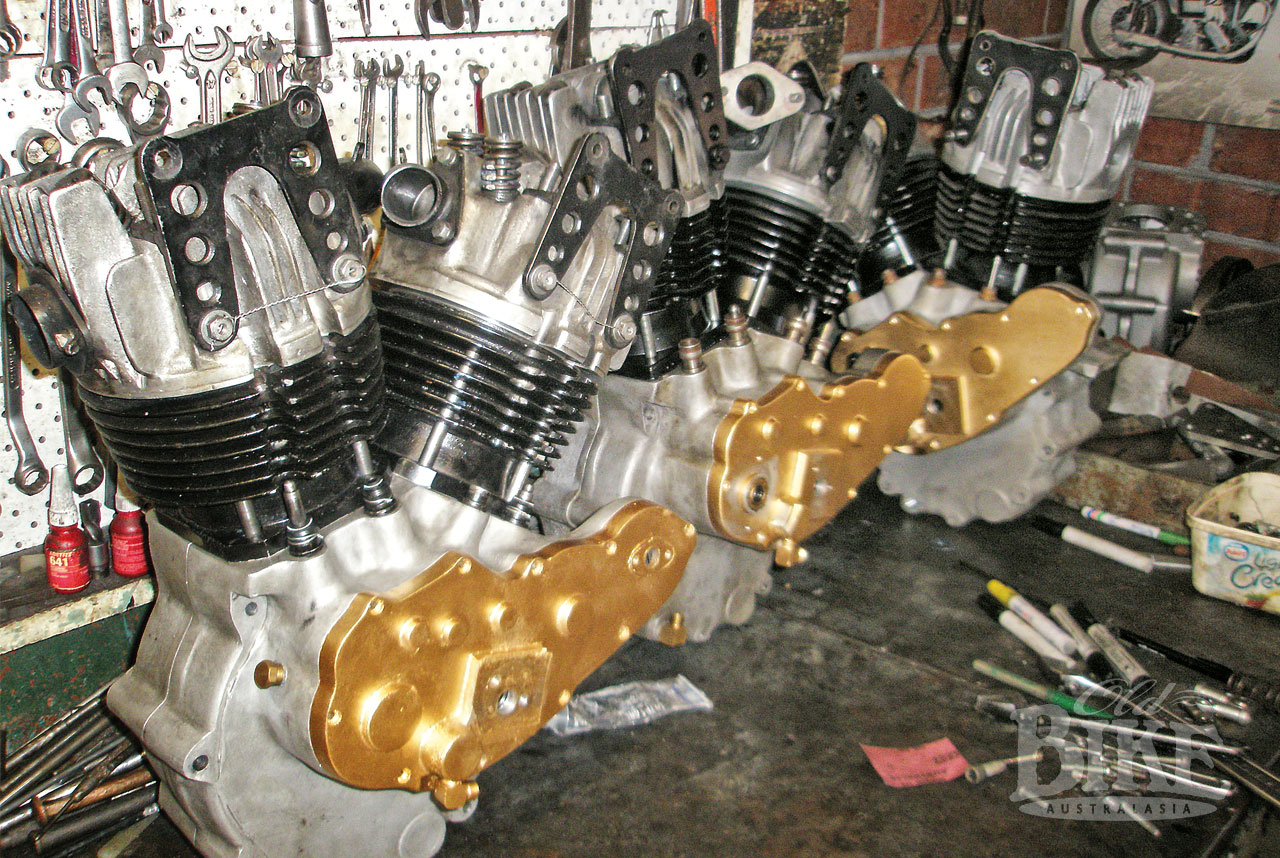
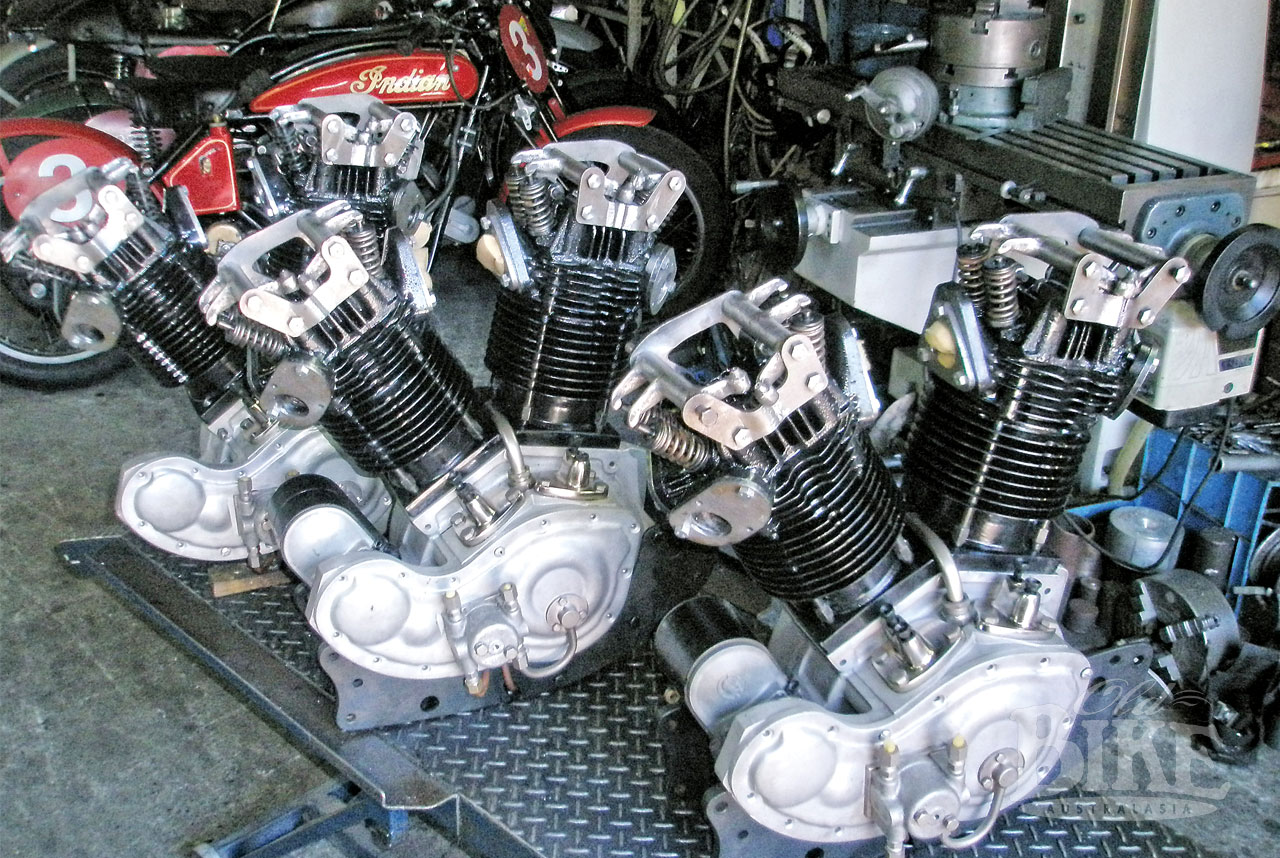
The next challenge was to build up four 1924 Harley Davidson eight-valve engines that Peter Arundel had acquired patterns for. Again I was able to use many of the same ideas that had originated in the Anzani and Indian projects except for the cylinder heads. Because of their unusual shape these needed a bit of head scratching but it all turned out OK in the end so who knows what the next 8v challenge will be.


